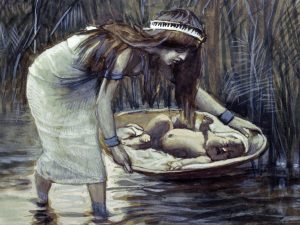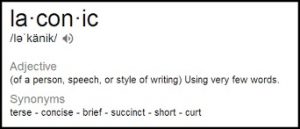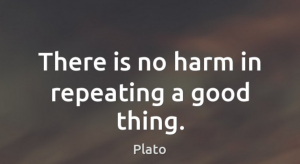Shemois 2021: Jeopardy & Breastfeeding
by devadmin | January 7, 2021 11:09 pm
 We happily begin this week with a huge shout out and mazel tov to our cousins and very dear friends, Sharon and Brian Duftler, upon the engagement this past Sunday, of their givaldige son Mendy, to Eliana Slomnicki, she beautiful daughter of Laura and Steven Slomnicki. We have known Mendy since birth -mamish- and watched him grow and mature into the fine young man he is today. (We also watched his tzitzis grow longer over the years.) A big mazel tov to Mendy’s siblings Rachel, Aliza, and Boaz and to the entire extended family. Mazel tov to the entire Slomnicki family who we look forward to meeting in person. May Eliana and Mendy merit to build a beautiful life together.
We happily begin this week with a huge shout out and mazel tov to our cousins and very dear friends, Sharon and Brian Duftler, upon the engagement this past Sunday, of their givaldige son Mendy, to Eliana Slomnicki, she beautiful daughter of Laura and Steven Slomnicki. We have known Mendy since birth -mamish- and watched him grow and mature into the fine young man he is today. (We also watched his tzitzis grow longer over the years.) A big mazel tov to Mendy’s siblings Rachel, Aliza, and Boaz and to the entire extended family. Mazel tov to the entire Slomnicki family who we look forward to meeting in person. May Eliana and Mendy merit to build a beautiful life together.
Jeopardy & Breastfeeding

Welcome to Sefer and Parshas Shmois where its hundreds of years later than it was just last shabbis. How could that be? Seemingly, time flies when one is enslaved and suffering miserably. Ober, is that emes? And if that’s at all emes, why did it take so damn long for 2020 to be over? Ver veyst!? In any event, though a good part of our religious practices revolves around the remembrance of our freedom from slavery and that the RBSO took us unto Him to be His nation, the Chosen People, the entire slavery and its angst, is covered in but a few pisukim in this week’s parsha while the great majority is dedicated to the RBSO’s plans and the hiring a spokesperson, a leader, to get the Israelites (not yet Yiddin) out of Mitzrayim. Would we enjoy Pesach and all its trimmings without slavery?
 This past shabbis, over at the Felder (Aharon and Esty) Covid-safe minyan, a chaver and longtime reader -let’s call him Abe Abittan- told me that his mother (whose husband OBM, was a well-known and respected rabbi for decades, and may she continue to be well) asked if the Ois, in year 11, ever repeats what has been written in previous years. And the answer is that generally not. Well, kimat never. Avada there are references and lines one may, and should recall by now, and at times, a thought is repeated by poplar request, on those very rear occasions, the Ois does so point them out. How is it shayich to keep asking new questions and finding answers each week? For that (and all else) the Ois avada thanks the RBSO Who -for reasons we will never fully chap, wrote the heylige Toirah is a laconic style which leads one to ask new questions with every re-read of the parsha. As you can only imagine, this week’s parsha contains a boatload -mamish- of information which leads to questions in bulk.
This past shabbis, over at the Felder (Aharon and Esty) Covid-safe minyan, a chaver and longtime reader -let’s call him Abe Abittan- told me that his mother (whose husband OBM, was a well-known and respected rabbi for decades, and may she continue to be well) asked if the Ois, in year 11, ever repeats what has been written in previous years. And the answer is that generally not. Well, kimat never. Avada there are references and lines one may, and should recall by now, and at times, a thought is repeated by poplar request, on those very rear occasions, the Ois does so point them out. How is it shayich to keep asking new questions and finding answers each week? For that (and all else) the Ois avada thanks the RBSO Who -for reasons we will never fully chap, wrote the heylige Toirah is a laconic style which leads one to ask new questions with every re-read of the parsha. As you can only imagine, this week’s parsha contains a boatload -mamish- of information which leads to questions in bulk.
 Let’s start there. Why is the RBSO is so mysterious with us? Why does He choose not to identify key players in the parsha until later, or even next week? Why does it take Rashi, the heylige Gemora, and others to dig and figure out just whom the RBSO was taking about in the parsha? Why the cat and mouse games? What’s pshat? As opposed to Sefer Bereishis, where kimat every individual is identified and shouted out by name upon introduction, and everyone’s name is in fact their real name (except for Eliezer, Avrohom’s servant), as we begin Parshas Shmois, we find ourselves playing Jeopardy. Certain facts are revealed, ober no name is attached. And taka, we need to shout out Alex Trebek, host of Jeopardy for over 8000 episodes, who passed away recently (not from corona). Alex had been honored with a Guinness World Records® record for most game show episodes Hosted by the same presenter. And for those living under a rock or don’t watch much TV, his last recorded episodes are airing this week. Ober, life goes on and a new host will soon emerge. Veyter.
Let’s start there. Why is the RBSO is so mysterious with us? Why does He choose not to identify key players in the parsha until later, or even next week? Why does it take Rashi, the heylige Gemora, and others to dig and figure out just whom the RBSO was taking about in the parsha? Why the cat and mouse games? What’s pshat? As opposed to Sefer Bereishis, where kimat every individual is identified and shouted out by name upon introduction, and everyone’s name is in fact their real name (except for Eliezer, Avrohom’s servant), as we begin Parshas Shmois, we find ourselves playing Jeopardy. Certain facts are revealed, ober no name is attached. And taka, we need to shout out Alex Trebek, host of Jeopardy for over 8000 episodes, who passed away recently (not from corona). Alex had been honored with a Guinness World Records® record for most game show episodes Hosted by the same presenter. And for those living under a rock or don’t watch much TV, his last recorded episodes are airing this week. Ober, life goes on and a new host will soon emerge. Veyter.
As the parsha opens, the heylige Toirah gives us information, ober it’s cryptic and up to us to ask and identify the players in the first few chapters. Let’s play Jeopardy: Because the heylige Toirah is not a game, we will not play for dollars and will limit the game to Biblical Personalities and Places, ober you get the gist: the Ois will give you the facts as found in the heylige Toirah and it’s your job to identify the people, and or places, by name in the form of a question. Here’s an example.
Answer: His Toirah posts are now seen around the world by hundreds of thousands weekly:
Question: Who is the heylige Oisvorfer? Ready? Here we go:
1: A man marries a woman and they have a child:
2- At a certain age -of course subject to of at least a few disputes- the un-named baby boy is placed into a mini floating ark resembling basket:
3- A baby floats down the river and is fetched by Paroy’s daughter.
4- Because he was drawn out of the water:
5- The baby’s sister kept a watchful eye as the ark floated down the river:
6- Paroy tells two Jewish midwives to throw all male children into the river:
7- Pisom and Ramsase:
8- Moishe went out and saw two Jews fighting:
And so chapter 1 comes to an end where the questions to each of the answers provided is in some form of riddle. We will not meet Moishe’s parents by name until next week. The midwives are never identified by name, nor is Bisya, Paroy’s daughter who fetched Moishe out of the river and who named him. Moishe’s shver (FIL) Yisroy, who goes on to get his own named parsha is not identified by name until after Moishe marries his daughter, nor is Miriam who plays a pivotal role in arranging for baby Moishe to be breast fed by his own mother. How then do we know these people? As mentioned above, in certain instances, we find out later in the parsha, while in others, Rashi and other exegetes help us identify the unidentified persons or places. The bottom line: perhaps it was the RBSO’s plan from the get-go to keep us on our toes, to make sure we study and review what others had to say and for His heylige Toirah to become illuminated only as we go hunting for answers.
What we know with certainty from a review of the pisukim is this: the heylige Toirah tells us (Shmois 2:11) that baby Moishe grew up and went out to see the suffering of his people: “And it came to pass in those days, when Moishe was grown up, that he went out unto his brethren, and looked on their burdens; and he saw an Egyptian smiting a Hebrew, one of his brethren.”
וַיְהִ֣י ׀ בַּיָּמִ֣ים הָהֵ֗ם וַיִּגְדַּ֤ל מֹשֶׁה֙ וַיֵּצֵ֣א אֶל־אֶחָ֔יו וַיַּ֖רְא בְּסִבְלֹתָ֑ם וַיַּרְא֙ אִ֣ישׁ מִצְרִ֔י מַכֶּ֥ה אִישׁ־עִבְרִ֖י מֵאֶחָֽיו׃
Those who went to yeshiva avada recall the rebbe telling you over and again -usually while brandishing his stick- that the heylige Toirah does not repeat words; there isn’t one extra letter or word in the entire Toirah. If you see a word repeated, it must have some extra meaning and is there to teach us something. What is that something? Ver veyst?

Ober this week, not just do we have a double expression but they appear in two consecutive pisukim. They do? Which thought or words are repeated? We quoted above from posik 11 and learned that Moishe grew up. So far so good, ober we forgot to mention posik 10 where we read azoy: When the child grew up, she brought him to Paroy’s daughter, who made him her son. She named him Moishe, explaining, “I drew him out of the water.”
וַיִגְדַּ֣ל הַיֶּ֗לֶד וַתְּבִאֵ֙הוּ֙ לְבַת־פַּרְעֹ֔ה וַֽיְהִי־לָ֖הּ לְבֵ֑ן וַתִּקְרָ֤א שְׁמוֹ֙ מֹשֶׁ֔ה וַתֹּ֕אמֶר כִּ֥י מִן־הַמַּ֖יִם מְשִׁיתִֽהוּ׃
The bottom line: twice in two consecutive pisukim we learn that Moishe grew up. What’s pshat in that? How did our rabbis talk their way out of the double talk and repeated thought and words? Let’s chazir: posuk 10 tells us: “The boy grew up (vayigdal hayeled) and she brought him to the daughter of Paroy and he was a son to her. She called his name Moishe, as she said ‘For I drew him from the water,” The very next posik says, “It happened in those days that Moishe grew up (vayigdal Moishe) and went out to his brethren and saw their burdens.” Says the Ramban azoy: these two juxtaposed pisukim both use the same term ‘vayigdal’ to indicate the growth of Moishe. The first posik is referring to Moishe’s physical growth and the second refers to his spiritual growth. In the first posik, Moishe grew physically. In the second, he became a ‘gadol’ – a man of spiritual stature. Shoin, that was easy. Says the medrish “Moishe grew up and went out to his brethren and saw their burdens,” meaning that Moishe saw their burden and cried over them. He would moan “woe is me over your fate. If only it could be me who would suffer rather than you.” He would then roll up his sleeves, so to speak, and participate in their hard labor. Gishmak. The bottom line: the juxtaposition of the term “gadol” (which the Ramban attributes to spiritual greatness) and the mention of Moishe’s participation in the suffering of his brethren, is a clear indication that the Toirah’s definition of a gadol is someone who cares about the fate of his fellow Jew. Says Rav Soloveitchik that vayigdal carries with it the connotation of greatness. In this regard, Moishe’s greatness is reflected in the simple fact that he no longer limited himself to his selfish, parochial concerns; he grew to be concerned about the welfare of his brothers. That is, he was no longer self-centered. He was no longer a child. He became a gadol. All the rest is bs. Fartig! Well, he doesn’t use those words, ober you chap. Adds the heylige Ois azoy: the degree to which a person feels the pain and trouble of another Jew, defines how much of a “gadol” he is. And to the degree that he’s busy staring at pictures of Gal Gadot, he’s an oisvorf mamish. Another gishmak. The bottom line: Moishe grew up and was a mentch, and that raboyseyee, is the pshat of a gadol.
Nu, since all agree that the first mention of Vayigdal seems to be a reference to Moishe’s physical maturation, efsher we should explore this topic: how big was Moishe? How tall was he? What’s pshat he physically matured? Let’s find out. Says the heylige Gemora (Brochis: 54b) also referenced by the last Rashi of Parshas Chukas when talking about the encounter between Moishe with the giant Oig, azoy: Moishe was ten Amos tall (between 15-20 feet), based on the different possibilities of the size of an Amah, and he jumped ten Amos into the air and hit Oig’s knees. Ois was a giant but Moishe -according to this pshat- was no slouch. Ober, does anyone take this literally? Ver Veyst? We could argue that since all depictions of Moishe in books and in the movies, show Moishe as a normal sized person and not 2 or 3 times taller than the rest of the people, that’s he was but regular size, efsher 5’9” or 5’10”, the size of the average Jewish male. On the other hand, if we do take this literally, perhaps all the pictures should be changed! On the other hand, let’s learn this shtikel:
משה רבינו עשר אמות היה שנאמר ויפרש את האהל על המשכן. מי פרשו? משה רבינו פרשו
 Moishe was 10 amos tall and here’s why. The Mishkan was ten amos high, and the posik tells us that Moishe spread the covering over its top. This leads Rav -in the heylige Gemora- to the conclusion that Moishe was ten amos tall. Ober, asks the Pardes Yoisef (Shmois 40:19) azoy: how can this information lead to a conclusion regarding Moishe’s height? Would it have not been possible for Moishe to stand on a platform, or on a ladder and spread the cover without himself being so tall? Taka a logical question. He explains that the heylige Gemora must be of the opinion that Moishe’s spreading the cover over the top of the Mishkan is defined as a service, and, as such, the one performing the service may not have an interposition between his feet and the floor (check out the Gemora Zevachim 26a). Therefore, it could not have been that Moishe was standing on a ladder or any other raised surface. And by extension, Moishe was ten amos tall. Shoin. But listen to this: R’ Shimi b. Chiya told Rav that according to his explanation, Moishe was blemished, because the proportion of his body, which was huge, to his arms, which are understood to be regular sized, was disproportionate. Rav corrected R’ Shimi, and told him that Moishe’s arms were also large, and therefore in proportion to the rest of his body. Avada there are obvious problems with the suggestion that Moishe was so tall and a few early sages (rishoinim) ask how could he enter the Tabernacle given his height? Ober says the Maharal mi-Prague that Rav was not referring to Moishe’s physical stature, so much as to his spiritual greatness. The Gemora goes on, ober the bottom line is azoy: when the pisukim mention twice that Moishe grew up, he might have been 15’ tall; no wonder he was done breastfeeding. Breastfeeding? What has breastfeeding to do with the word Vayigdal or growing up? We shall soon find out.
Moishe was 10 amos tall and here’s why. The Mishkan was ten amos high, and the posik tells us that Moishe spread the covering over its top. This leads Rav -in the heylige Gemora- to the conclusion that Moishe was ten amos tall. Ober, asks the Pardes Yoisef (Shmois 40:19) azoy: how can this information lead to a conclusion regarding Moishe’s height? Would it have not been possible for Moishe to stand on a platform, or on a ladder and spread the cover without himself being so tall? Taka a logical question. He explains that the heylige Gemora must be of the opinion that Moishe’s spreading the cover over the top of the Mishkan is defined as a service, and, as such, the one performing the service may not have an interposition between his feet and the floor (check out the Gemora Zevachim 26a). Therefore, it could not have been that Moishe was standing on a ladder or any other raised surface. And by extension, Moishe was ten amos tall. Shoin. But listen to this: R’ Shimi b. Chiya told Rav that according to his explanation, Moishe was blemished, because the proportion of his body, which was huge, to his arms, which are understood to be regular sized, was disproportionate. Rav corrected R’ Shimi, and told him that Moishe’s arms were also large, and therefore in proportion to the rest of his body. Avada there are obvious problems with the suggestion that Moishe was so tall and a few early sages (rishoinim) ask how could he enter the Tabernacle given his height? Ober says the Maharal mi-Prague that Rav was not referring to Moishe’s physical stature, so much as to his spiritual greatness. The Gemora goes on, ober the bottom line is azoy: when the pisukim mention twice that Moishe grew up, he might have been 15’ tall; no wonder he was done breastfeeding. Breastfeeding? What has breastfeeding to do with the word Vayigdal or growing up? We shall soon find out.
The bottom line: we reflexively associate “gadol” with one who is steeped in great learning and scholarship. Ober, is that always the case? Pshat could be that Moishe attained his gadol stature long before he was selected by the RBSO to be the anointed redeemer. Efsher he earned his medal when he showed the proper empathy for his fellow Jew. Final bottom line: height must be measured from the neck up, not the ground up. Gishmak!
 Shoin, we have time and space for a few more related questions regarding Moishe’s growing up and coming of age. How old was Moishe when he grew up? How old was he when he was weaned off his mother’s breasts and brought to Bisya, Paroy’s daughter? And how old was he when he went out among his brethren? And one final question: how the hec did he know that the lowly Israelites, in their 210th year of slavery, totally physically and emotionally spent, were his brethren? Let’s try to find out by recalling this posik (Shmois 2:9):
Shoin, we have time and space for a few more related questions regarding Moishe’s growing up and coming of age. How old was Moishe when he grew up? How old was he when he was weaned off his mother’s breasts and brought to Bisya, Paroy’s daughter? And how old was he when he went out among his brethren? And one final question: how the hec did he know that the lowly Israelites, in their 210th year of slavery, totally physically and emotionally spent, were his brethren? Let’s try to find out by recalling this posik (Shmois 2:9):
Paroy’s daughter said to her (Yoicheved, Moishe’s real mother), “Take this baby and nurse him for me, and I will pay you.” So the woman took the baby and nursed him. And the shaylo is, how long did Moishe suckle from him mother’s breasts? We can kler azoy: since the princess was only paying for nursing services and she wanted a son badly, once Yoicheved’s milk dried up, baby Moishe was returned to Paroy’s daughter at the age of 6 months-ish. Is that so? Ober, says the medrish (Shmois Rabbah 1:260), azoy: “And the child (Moishe) grew” – twenty-four months she nursed him. How old was Moishe when done with the breast? 24 months according to this pshat. Another view: the word ‘Vayigdal’ – and he grew up covers many stages of growth through childhood. Clearly, the first time is after Moishe had been weaned off nursing from his actual mother and was able to be brought back to Bisya. This was obviously at around three years of age. Why is three years of age a good time to have stopped nursing? Because we find a similar description in Breishis 21:8 where the words ‘Vayigdal Hayeled are used to tell us when Avrohom made a party for Yitzchok because he had been weaned. Shoin.
What do we know with certainty? Nothing! How old was Moishe when done breastfeeding? Either 6 months, two years or three years old. How long should a child chap the breast? As an aside, how long an adult should chap is for another day. The bottom-line question: how long was Moishe breastfed? And why are there different opinions? Nu, to answer that question, we have to look into the heylige Gemora where -and as you can imagine- breasts and breastfeeding was also a topic of discussion. And as it turns out, breastfeeding is taka valued by Jewish tradition. The heylige Gemora (Kisuvis 60A,B) discusses breastfeeding duration in a number of contexts and in most cases assumes a duration of 24 months. How did they know? Because the Gemora knows everything and case closed! Is it? Says the Shulchan Aruch that breastfeeding should run a minimum of two years (Even Haezer 143:8) and a maximum of five years (Yore Deah 81:7). You hear this? And say the Rambam in his Mishneh Toirah LeRambam (Gerushin 11:26) that breastfeeding is recommended: Age five is considered the upper limit for nursing in Jewish law. Moreover, he gives guidance on breastfeeding methods: The mother is advised to begin on the left side, “close to the heart.” Adds the Ois: as boys become men, they don’t care which side they begin or end on. Shoin!
Says the medrish: Moishe refused to nurse from an Egyptian shiksa or her nursemaids, and that’s why Bisya, Paroy’s daughter, sent for a Jewish one. And she turned out to be none other than Yoicheved, Moishe’s own mother. How gishmak is that? Our sages of yore recognized that without the early influence of Yoicheved, Moishe could not grow up to become the modest, compassionate, and dedicated leader who led the future Yiddin from slavery and the deep-rooted Egyptian culture which included avoido zoro and much more to which they had become accustomed. Shoin.
 Let us then close with one more gishmake medrish on the topic of breastfeeding and breast milk wherein breast milk is the stuff of miracles mamish. Says the medrish and one cannot make this up so check it out in Pesikta Rabati 43 where the medrish imagines the gossip that ensues when the 90-year-old Soro gives birth to a child. According to this text, her neighbors whisper that the baby really belongs to the maidservant. Nu, if they were gossiping about Soro, imagine how our neighbors and friends are talking about us behind our backs. Shoin, azoy geyt di velt (that’s how the world operates); people gossip. Anyway, in response, “Soro stood up and undressed, and her two breasts were spraying milk like two spouts of water.” And while we are of course all accustomed to a neys min ha-shomayim (miracle from heaven), imagine the amazement at the “neys min hashodayim” (miracle from the breasts). The medrish continues. Amazed at what they witness, the neighbors bring their own children to drink from Soro’s milk. According to one version of this medrish, all converts for the rest of history are descended from the children who nursed at Soro’s breast. Soro’s milk, according to this text, has the power to make Jewish souls. And now raboyseyee, the never-ending infatuation with the breast makes perfect sense. It did wonders for Yitzchok and Moishe and avada we should emulate their ways.
Let us then close with one more gishmake medrish on the topic of breastfeeding and breast milk wherein breast milk is the stuff of miracles mamish. Says the medrish and one cannot make this up so check it out in Pesikta Rabati 43 where the medrish imagines the gossip that ensues when the 90-year-old Soro gives birth to a child. According to this text, her neighbors whisper that the baby really belongs to the maidservant. Nu, if they were gossiping about Soro, imagine how our neighbors and friends are talking about us behind our backs. Shoin, azoy geyt di velt (that’s how the world operates); people gossip. Anyway, in response, “Soro stood up and undressed, and her two breasts were spraying milk like two spouts of water.” And while we are of course all accustomed to a neys min ha-shomayim (miracle from heaven), imagine the amazement at the “neys min hashodayim” (miracle from the breasts). The medrish continues. Amazed at what they witness, the neighbors bring their own children to drink from Soro’s milk. According to one version of this medrish, all converts for the rest of history are descended from the children who nursed at Soro’s breast. Soro’s milk, according to this text, has the power to make Jewish souls. And now raboyseyee, the never-ending infatuation with the breast makes perfect sense. It did wonders for Yitzchok and Moishe and avada we should emulate their ways.
A gittin Shabbis-
The Heylige Oisvorfer Ruv
Yitz Grossman
Source URL: https://oisvorfer.com/shmois-2021-jeopardy-breastfeeding/